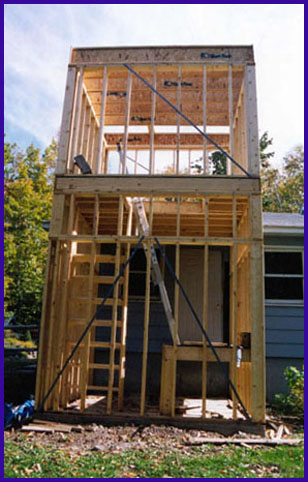 |
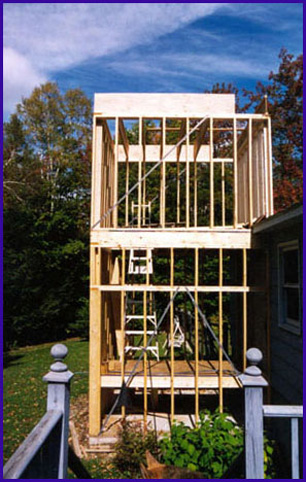 |
With so many trees surrounding our property, a ground level observatory was not an option. I decided that a tower type observatory attached to the garage for easy access, was the way to go. Construction began in the fall of 1998. The "tower" is 2x6 construction and the dimensions are 10 ft. square and 27 ft. high. The construction was accomplished almost entirely by one man, Dan Holodick, a very talented and creative builder from Hermon, Maine.
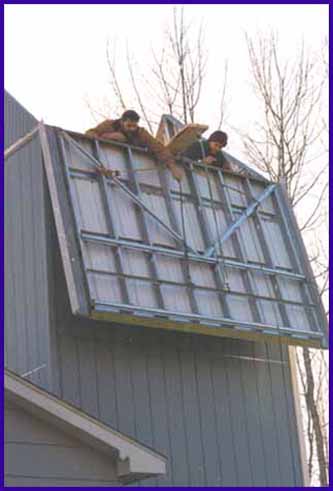 |
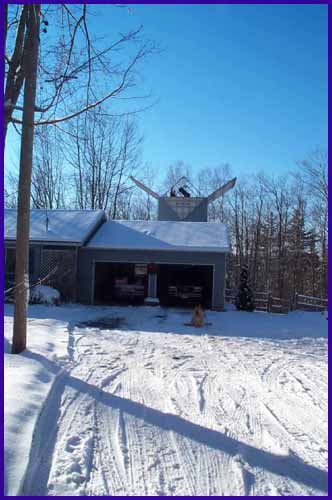 |
The top level consists of four metal panels that open and fall away giving an almost unobstructed view of the sky. There are two large north and south panels and two smaller east and west gable panels. Here Dan and I are hoisting up the large north panel, and getting it in position so that the hinges can be welded. These larger panels weigh 200 lbs. apiece.
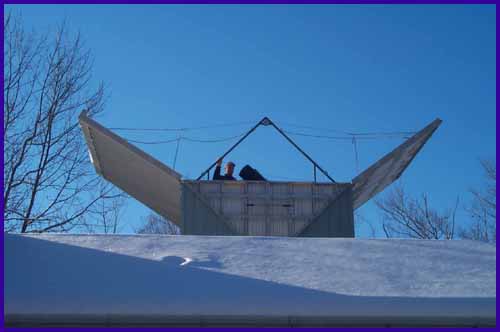 |
Cables extend from the top of the large panels, around the pulleys attached to the frame that I'm holding, and down to garage door springs which are located at the base of the observatory. The cables and springs assist when opening and closing the panels. Using his skills as an FAA Certified Airframe Mechanic, Dan made the panels sturdy, rigid, and durable and at the same time kept them as light weight as possible.
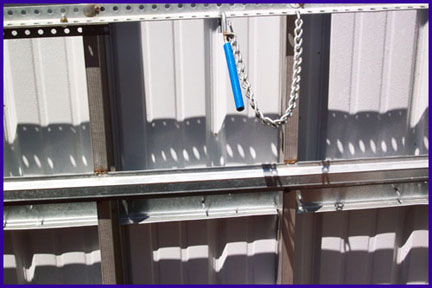 |
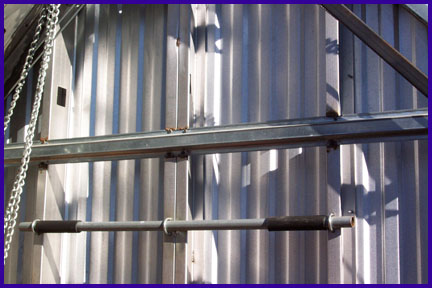 |
The top panels are made of metal roofing material, light gauge steel studs and crosspieces. The hook in the left photo ensures that the panels stay closed on very windy days. There is also a locking device used when the panels are open to prevent the wind from lifting the panels. The right photo shows the gripping bar used to lower the gable sides.
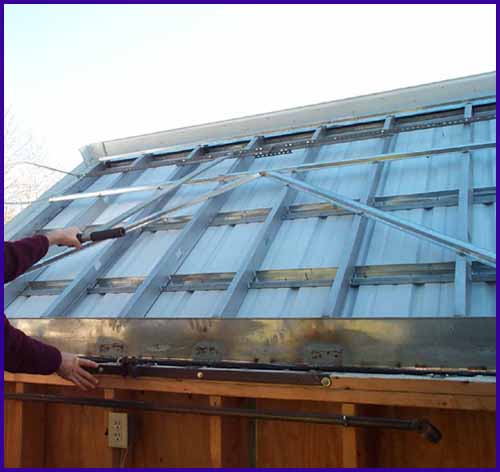 |
Shown here is the T-bar used to open and close the large north and south panels.
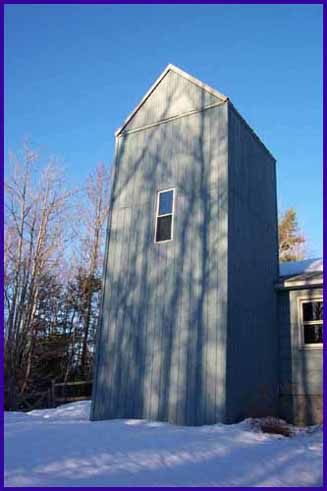 |
The observatory was finished in the spring of 1999. Rural Hampden, Maine is an ideal location for astronomy with very little light pollution and fairly dark skies. However, there is a slight glow on the northern horizon associated with the city lights of Bangor.
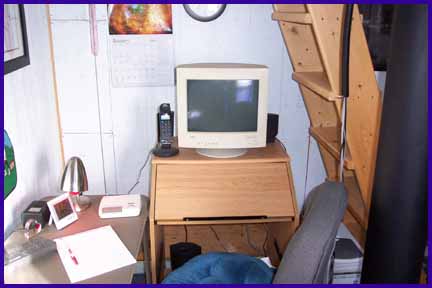 |
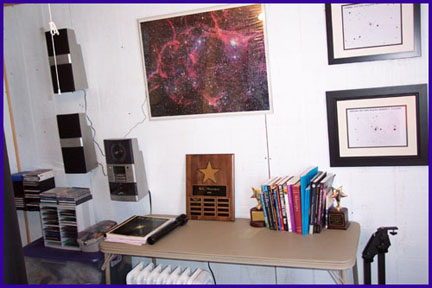 |
In October 2000, I finished the control room which is the room beneath the telescope level. This room has many of the amenities that an astronomer requires such as: comfortable chair, wall prints, reference material, CD player, and heater. Despite abundant insulation placed in the ceiling and walls, heat transfer is an important concern when heater is turned on. In the left photo, on the right hand side, you can see the 6'' diameter well pipe (painted black) that serves as the telescope pier. The pipe, filled with sand, extends from the telescope level, to 5 ft. below the ground, embedded in concrete. Where the pipe passes through the control room and top level floors, it is wrapped with a strip of thick carpet material held in place by wooden collars. Since the pier is not free standing, the carpet material and collars support the pipe and also dampen any vibrations.